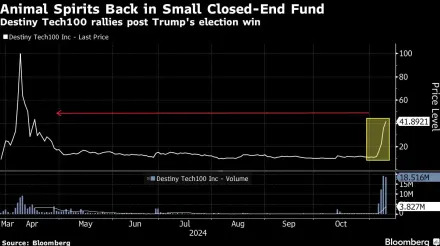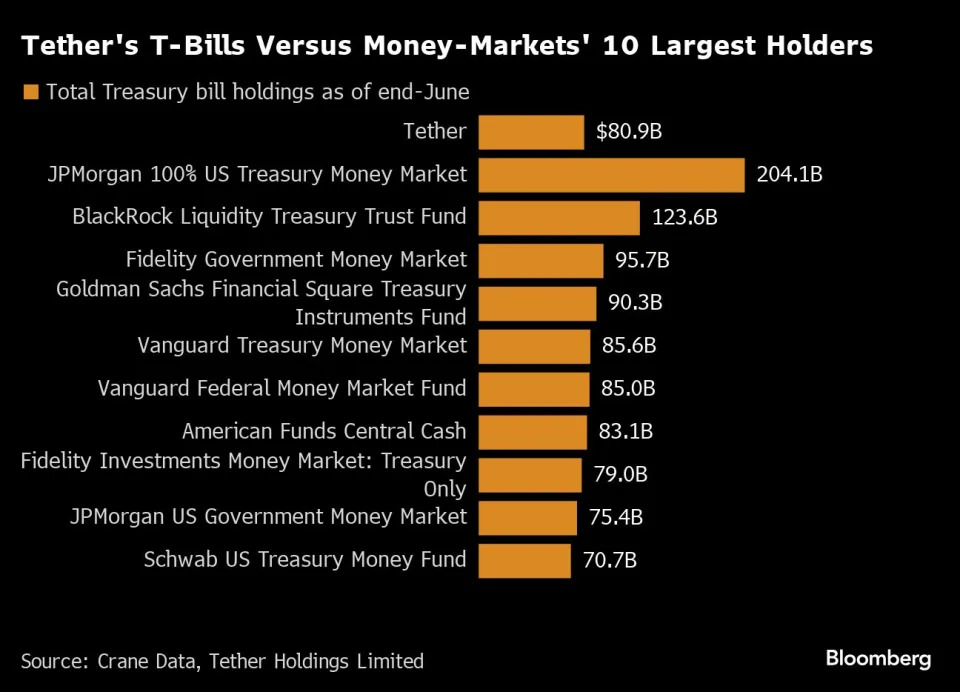Volatility is back in the stock market after a roughly 18-month slumber .
Turbulence has mounted since mid-July, culminating last week with the S&P 500 logging both its best and worst days since 2022. Traders have wound down some investments that thrived in calm conditions and pulled back from bets that the sideways action would persist.
The signs are unmistakable: A once-in-a-generation rout in Japanese stocks . Half-trillion-dollar daily swings in value of the Magnificent 7 group of tech giants . A streak of seesawing Nasdaq Composite sessions last seen during the depths of the pandemic.
Now, for investors big and small, the question is: Will it continue?
“When you’re low for so long, you’re bound to have a pickup,” said Eric Metz, chief investment officer at SpiderRock Advisors, referring to daily swings in asset prices. “When it changes, it changes fast.”
The jolt marks the start of a more anxious phase for a record-breaking market that has methodically boosted Americans’ wealth and propped up the consumer spending that is central to the U.S. economy. As investors parse each jobs report or corporate earnings release for clues about what could drive equities’ next move, many of the factors behind their unusual lull in recent months are increasingly in question.
Wall Street is growing more skeptical about the payoffs of artificial intelligence, fueling a potentially massive rotation into other stocks and threatening to derail indexes that have become top-heavy with tech shares . A weakening U.S. labor market has rekindled economic fears . The inflation-fighting Federal Reserve in September is expected to begin interest-rate cuts that could reroute the global flow of capital .
While stocks have calmed somewhat after last week’s whirlwind, new sources of potential choppiness will land on trading desks this week. An inflation report Wednesday, followed by retail-sales data Thursday, should provide hints about whether the Fed will slash rates by a quarter-point next month as many investors anticipate.
Disappointing readouts could draw speculation of a half-point cut and push investors to flee riskier assets for the safety of government bonds. Earlier this month, after the Labor Department reported less hiring in July than economists forecast, yields on 10-year and 30-year Treasurys tumbled to their steepest weekly declines since the Covid-19-induced free fall.
In the now-jittery market, TD Securities wrote to clients, even “mundane economic surprises could drive outsized market moves.”
Last Thursday, the tech-heavy Nasdaq finished an eight-day stretch in which it rose or fell by at least 1%, with momentum sometimes reversing mid-session. The index has faced longer streaks of such volatility just three times the past two decades, according to Dow Jones Market Data, once in March 2020 and twice during the 2008 financial crisis.
So far, the recent froth has done relatively little harm to individual investors who have watched their retirement and brokerage accounts steadily balloon. Although the S&P 500 is down 4.1% from its July peak, the index remains 14% higher than the start of the year.
But the gyrations can be more painful for trading firms that bet on asset prices, often with borrowed money . The risk is that their rush to reduce risk or capitalize on momentum can reverberate across markets.
That is what happened after the Bank of Japan raised its benchmark interest rate, pushing up the value of the yen from some its lowest levels in decades . The move blew up leveraged bets on the currency staying weak, which some analysts say totaled $1 trillion in size, and forced investors to unload other holdings to compensate.
The resulting deleveraging slammed stocks on Aug. 5, with Japan’s Nikkei 225 index suffering its worst one-day loss since 1987 before bouncing back somewhat later last week. In the U.S., the Cboe Volatility Index—known as Wall Street’s fear gauge—momentarily spiked to its largest intraday gain on record.
“If you were on the wrong side [of a move], you were really wrong,” said Jonathan Corpina, senior managing partner at Meridian Equity Partners.
Corpina and others say the tumult could ultimately be healthy if investors reduced risk in a big way. “Let it all flush out, let everybody panic,” he said. “You should actually be buying at these opportunities.”
But any such moves will also play out against a changing economic backdrop. After a year of relatively stable monetary policy, central bankers in the U.S. and Europe could slash borrowing costs at potentially different speeds. Their counterparts in Japan, where inflation is accelerating for the first time in years, might raise rates further.
The range of potential outcomes has contributed to a pullback from at least one popular bet that volatility will remain low. According to Morningstar Direct, investors this year added an average of $556 million a week into U.S.-based derivative-income exchange-traded funds, which sell options contracts on stocks held in the fund to juice returns. Net flows into those products plunged to about $117 million last week.
Underlying measures of volatility retreated Monday after the previous weekend’s rush for the exits didn’t repeat itself. Still, in a market where a handful of AI-focused tech giants command huge sway over stock indexes, some investors remain wary.
Double-digit declines over the past month by shares in four of the Magnificent Seven companies have raised the stakes for Nvidia’s earnings report later in August. Shares in the artificial-intelligence poster child have gained or lost at least 5% in seven of the past 11 trading sessions.
“People think the panic is over and are loading back up,” said Peter Tchir, head of macro strategy at Academy Securities. “I don’t think that we’ve tasted the panic yet.”
Write to David Uberti at david.uberti@wsj.com





